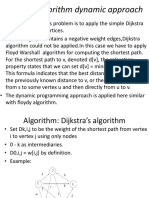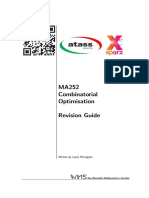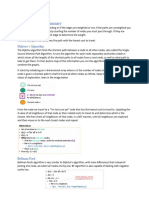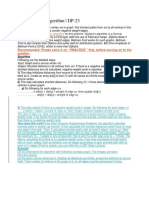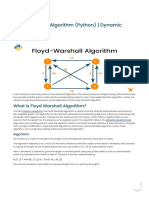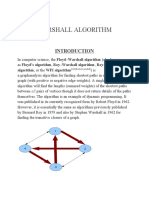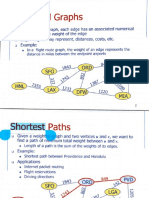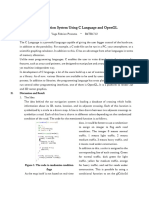0% found this document useful (0 votes)
5 views9 pagesCS3401 Algorithm - Removed
The document outlines Dijkstra's algorithm and Floyd-Warshall algorithm for finding shortest paths in graphs, detailing their pseudocode, complexities, and operational steps. It also introduces flow networks and the Ford-Fulkerson algorithm for maximum flow problems, alongside a description of maximum bipartite matching. Each algorithm is explained with its respective time complexity and methodology for implementation.
Uploaded by
Vandana VijayanCopyright
© © All Rights Reserved
We take content rights seriously. If you suspect this is your content, claim it here.
Available Formats
Download as PDF, TXT or read online on Scribd
0% found this document useful (0 votes)
5 views9 pagesCS3401 Algorithm - Removed
The document outlines Dijkstra's algorithm and Floyd-Warshall algorithm for finding shortest paths in graphs, detailing their pseudocode, complexities, and operational steps. It also introduces flow networks and the Ford-Fulkerson algorithm for maximum flow problems, alongside a description of maximum bipartite matching. Each algorithm is explained with its respective time complexity and methodology for implementation.
Uploaded by
Vandana VijayanCopyright
© © All Rights Reserved
We take content rights seriously. If you suspect this is your content, claim it here.
Available Formats
Download as PDF, TXT or read online on Scribd
/ 9






